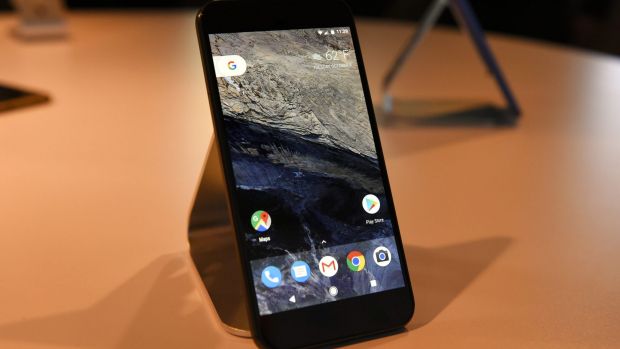
This week we got our first (official) look at Google’s new Pixel smartphones, and predictably much of the discussion has been around how they stack up to or “challenge” Apple’s iPhones, and whether they’re really Google’s “first ever” phones or just Nexus devices by another name.
While the Pixel has some obvious physical similarities to the iPhone, and while there were some playful jokes at Apple’s expense during Google’s presentation (free online storage, headphone jack etc), it’s not necessarily accurate to say the big G is “taking the fight” to Apple by attempting to make an iPhone of its own. The devices are similar in that their hardware and software are created by one company, but if anything Google is trying to make the anti-iPhone.
In a year when Apple has released a phone very similar to last year’s phone (which was itself a minor upgrade to the phone we saw the year before that), Google wants to push the idea that it’s releasing something new.
The very appeal of an iPhone is its ubiquity and familiarity, with new software arriving across the entire platform at once and new hardware adding faster or better versions of what came before.
Meanwhile the Pixel is stepping out from the rest of the Android ecosystem to act as a proving ground for all sorts of Google stuff that isn’t found elsewhere (yet), like Daydream VR, Google Assistant and live screen-sharing customer support, as well and recent Google apps like Allo and Duo, which are built in.
Even the name, Pixel, promotes this newness, being the only flagship phone name I can think of without a number or other model indicator at the end of it.
No, I don’t think Apple has to feel too worried or challenged by the Pixel. They are very different devices for consumers that want very different things. Existing makers of Android smartphones, however, could have reason to start sweating.
Previously, the only phones to get the big Google stamp of approval have been Nexus branded. These were solid, accessible devices that set a baseline for the Android experience. Clean, competent and always up-to-date, Nexus phones carried the names of their manufacturers (like HTC, Huawei or LG), but ran a version of Android untouched by phone-makers or telcos.

With Pixel, not only has Google aimed significantly higher with its hardware spec, but it’s offering an “opinionated” twist on its own Android software. Pixel runs Android 7.1, but it isn’t the 7.1 that Samsung, Sony and others are working to integrate into their devices.
In addition to the blue light filter, Dream VR mode and various tweaks in the vanilla version of 7.1, Pixel packs customisations including Google Assistant integration throughout, a new launcher that works like an evolution of Google Now, the unlimited and automatic ability to back up and restore videos and pictures in full resolution, built-in chat support and a smart storage solution that backs up old files to the cloud to save space. The look and feel of the software is also custom and unique to Pixel.
By designing its own hardware and putting its own unique twist on vanilla Android, Google is placing its own device in direct competition to other Android flagships. And although some of the features will likely become available to others (Google Assistant seems like a no-brainer), the Pixel could offer a nice alternative for those tired of waiting for their telco or handset maker to integrate Google’s latest and greatest.
[Source:-The Sydney Morning Herald]




